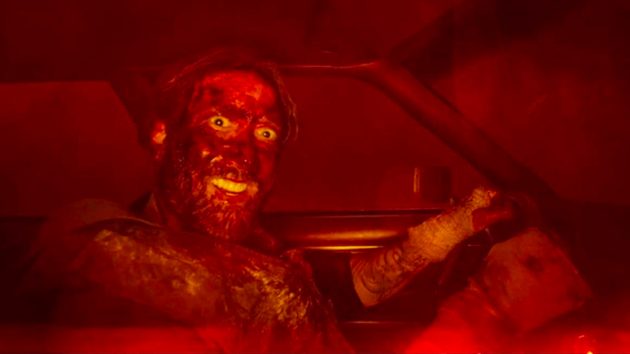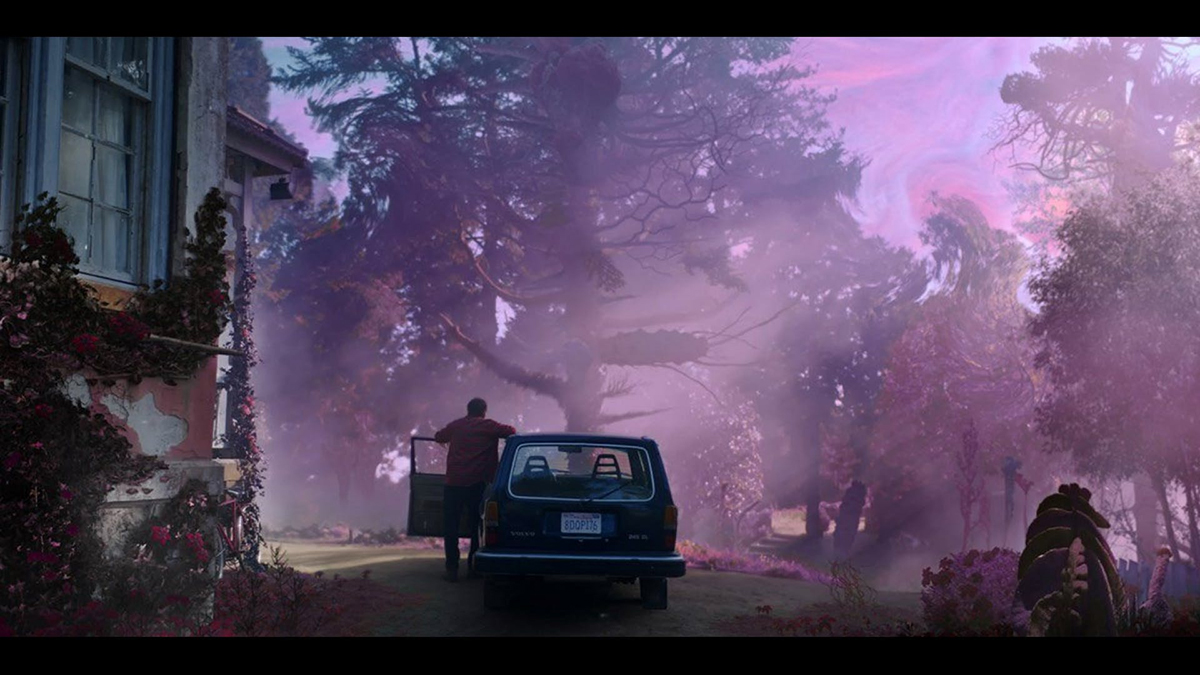Despite his posthumous renown as “the twentieth century’s greatest practitioner of the classic horror tale”, the stories of H. P. Lovecraft have proved notoriously difficult to adapt for the screen. Most previous attempts have been pretty dire. The most successful, Re-Animator, is an entertaining 80s ‘video-nasty’, but even that was based on a story that Lovecraft wrote as a tongue-in-cheek pastiche of pulp horror.
The biggest problem with adapting Lovecraft to the screen is that his best stories are based on horrors which are all-but indescribable – unseen sensations of ‘lurking fear’, limited human senses dimly experiencing the terror of dimensions and creatures beyond our understanding. Nowhere is this truer than in “The Color Out of Space”. How, indeed, to depict on film a colour that is literally “impossible to describe” and which is “only by analogy…called a colour at all”?
In spite of that, “The Color Out of Space” is the most-frequently adapted of all Lovecraft’s stories, having been filmed at least four times previously, with variously dull results.
Now streaming on Amazon Prime, Richard Stanley’s 2019 Color Out of Space, the South African director’s long-awaited return to mainstream feature films, finally gives what is one of Lovecraft’s best stories the cinematic treatment it deserves.
The plot is straightforward enough: in the remote New England backwoods, a meteorite crashes on the farm of the Gardner family, leaving behind a globule of the indescribable “colour” which then seemingly shrinks to nothing and vanishes. But then the horror begins. An unknown presence begins to blight the Gardner lands: crops grow abnormally large and abundant, but grotesque, foul-tasting and inedible. Bizarre, malformed animals are shot by hunters. The Gardner family one by one succumb to madness and grotesque bodily decay.
Stanley’s movie follows these basics faithfully and fleshes out the story with judicious pilferings from others of the Lovecraft canon. Daughter Lavinia Gardner, and the particular form of her descent into insanity, are heavily pilfered from “The Dunwich Horror” (which Stanley is apparently planning as the next of his reputed trilogy of Lovecraft adaptations). The narrator, nameless in the original story, is named Ward Phillips, a frequent pseudonym of Lovecraft (from his given names, Howard Phillips). There are also appearances by that mainstay of Lovecraftian fiction, the “accursed book”, the Necronomicon.
The performances are credible and effective, especially from Joely Richardson and Julian Hillard (who is fast becoming typecast as the nerdy kid caught up in horror shenanigans). Madeleine Arthur and Brendan Meyer also deliver a sympatico performance as sibling rivals turned allies.
But it’s the film’s Hollywood superstar, Nicolas Cage, who is often its weakest link. When Nathan Gardner finally descends into full insanity, Cage throws all restraint to the winds, sometimes to good effect, but too often with unintentionally hilarious self-parody. Contrast Cage’s histrionics with Jack Nicholson’s near-perfect depiction of an almost-identical character arc in The Shining.

Richard Stanley and Director of Photography Steve Annis, however, deserve full praise for their deft handling of the story and its cosmic horror. For much of the film the dread is vague and formless: strange pulses of light and colour with no obvious source, weird spatial distortions, creeping madness. It’s only in the third act that the direction throws restraint out the window and goes appropriately insane, as fitting Lovecraft’s vision of “a frightful messenger from unformed realms of infinity beyond all Nature as we know it; from realms whose mere existence stuns the brain and numbs us with the black extra-cosmic gulfs it throws open before our frenzied eyes”.
“Frenzied” is the keyword, here. Cage howls and gibbers, colour and vision go mad and other members of the Gardner family experience…well, suffice to say that my wife was moved to exclaim, “What was wrong with that H. P. Lovecraft?” Although to be fair, the particular scene that prompted that cry of revulsion is not taken explicitly from the original, but the story certainly hinted at a kind of body horror that left me feeling uneasy for long after I first read it. Indeed, Lovecraft seems to have anticipated by two decades the horrors of radiation sickness.
Lovecraft regarded “The Color Out of Space” as his “best tale…the only one of the lot which I take any pride in”. Which, while undoubtedly an unfair slight on much of the rest of his work, is probably true. Richard Stanley should likewise take pride in producing the best film adaptation of Lovecraft to date.
If you enjoyed this BFD article please consider sharing it with your friends.

